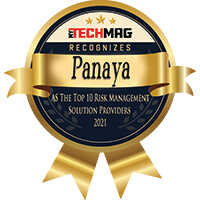Companies in the digital era need to stay vigilant of the complex risks associated with many factors. Risk managers must constantly cope with strategic, governance, operational, and financial risks.
Post pandemic, organizations require to modify their risk management strategies. The ever-growing reliance on cloud networks, supply chain, and digital infrastructure introduces new challenges to different businesses.
Despite the advances in data analysis, artificial intelligence, and machine learning, no organization is completely safe. Hence, awareness of the ongoing and emerging risk management trends is vital.
Here’s what risk managers should be aware of moving forward in the new decade after the global pandemic onslaught.
Latest Risk Management Trends that Can Shape the Industry
An effective risk management policy is a by-product of analyzing different types of threats. This section explains the top patterns and inclinations in the industry.
1. Management of Talent
Losing talented employees is always a disruption for any business. The company needs to start looking for potential replacements. This scenario leads to costly and time-consuming sourcing activity.
Going ahead, the great resignation still poses considerable risks to companies. The shortage of skilled workers and changing priorities will keep challenging different organizations.
Hence, risk analysts need to pay equal attention to managing the existing talent efficiently. Here’s what businesses can do to manage their human resources:
- Strengthening employee retention policy
- Investing in training activities
- Offering incentives and appraisals
- Staying flexible in the mode of working
Overall, talented individuals resigning from existing positions will remain a risk to any business’ productivity.
2. Impact of Pandemic on Supply Chain
The long-term impact of coronavirus will not disappear magically. The supply chain disruption will be an ongoing challenge for most businesses.
To combat this risk management challenge, managers need to invest in solid ERP software. At the same time, companies should modify their existing supply chain and logistics network.
Amidst all the traditional outlooks, some companies are looking to leverage the power of data. Insights on pandemic hotspots, supply chain disruption, and other on-field challenges can prove to be practical solutions.
In addition, supply chain attacks are a new form of cyberthreats that can impact a company’s output. Hence, enhanced safety measures that include cybersecurity solutions will continue to interest risk managers.
3. Data Management and Privacy
Privacy of consumer data is on the agenda of many government agencies. Hence, data leakage in any form can turn into a huge risk for organizations.
To prevent data breaches, companies need to upgrade their privacy policy. In addition, it is vital to communicate all the terms and conditions transparently with the end consumers.
Resultantly, risk managers can deploy streamlined data management systems. Also, awareness of modern laws and regulations regarding data privacy is crucial.
Data privacy laws will transform. So, adherence to these regulations should be the number one risk management priority concerned with data usage.
At the same time, data interpretation has become an enormous challenge for effective risk management. With abundant consumer and analytical data available, interpreting the useful bits will be critical for data management.
4. Sustainability of Environment
Efforts in environment sustainability and risk management are critical to avoid hazards to the planet.
Combating climate change will be a huge priority on the agenda of many countries. Hence, geo-engineering, recycling, and sustainable materials will find an increment in utility.
Furthermore, reducing gas emissions will remain vital to tackle environmental risks. Hence, companies will receive encouragement for allowing employees to work from home.
Risk managers can devise a plan to recruit a remote team. Consequently, they will end up following sustainability trends and benefit from such a strategy.
Climate change risk management techniques can witness expansion in different industries. So, reducing greenhouse emissions, shifting towards solar energy, and adopting strict sustainability rules will prove critical.
5. The emergence of Cyber Threats
Cyber currencies like Bitcoin and Ethereum are on the rise. Resultantly, cyber-attacks pose a massive threat to digital infrastructure.
Companies can witness an increased number of ransomware attacks. Interestingly, hackers will demand ransom in the form of cryptocurrency for releasing the breached data.
So, integrating artificial technology (AI) to tackle cybersecurity attacks should be a top consideration of risk managers. This way, companies can be well-equipped to safeguard themselves from large-scale crypto attacks.
Examples like SolarWinds, Colonial Pipeline, Kaseya, and Invenergy are sufficient to understand the magnitude of such attacks.
In addition, the growing reliance on digital assets and storage can be a source of vulnerability for companies. So, this risk management trend can disrupt the industry immensely.
6. The Rise of Risk Analytics
A data-driven approach is crucial for companies to plan effective risk management. Hence, risk analytics is a modern trend that can be used to analyze specific transactions.
The role of data analytics in various sectors is paramount. Similarly, risk managers can achieve their objectives using techniques like data mining.
As a result, analysts can make better decisions to refine and analyze early warning signs of risk. This risk management trend might become a preferred option for various government and private institutions.
This technique can offer the following benefits:
- Ability to create customized risk alerts
- Real-time performance analysis
- Identification of high-risk customers
- Analysis of risk limit breaches
At this time, combining risk and behavioral analytics can prove to be a useful strategy for modern organizations.
Also Read: Effective Risk Management
Wrapping Up
The dynamic nature and interconnectivity of different trends make risk management more challenging. Managers and analysts should identify these risk management trends’ nature, relevance, and priority.
Using data analytics, AI, and modern tools can help create a secure environment for the company. Above all, integrating risk management strategies will prove useful for different types of businesses.
These trends can impact the industry and various sectors in different ways. However, it is vital to adapt and plan in advance to tackle the disruptions and challenges in today’s era.
Risks are an inseparable part of the modern economy. Cyber or natural, it is up to the managers to identify, counter, and monitor their customized strategies.







